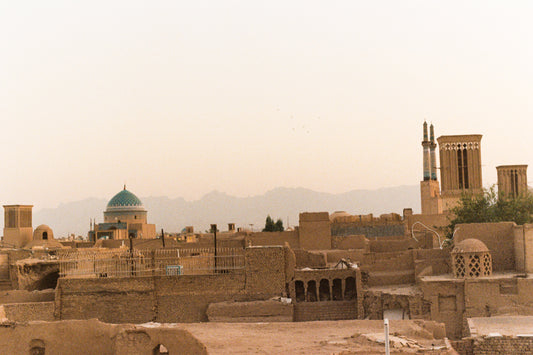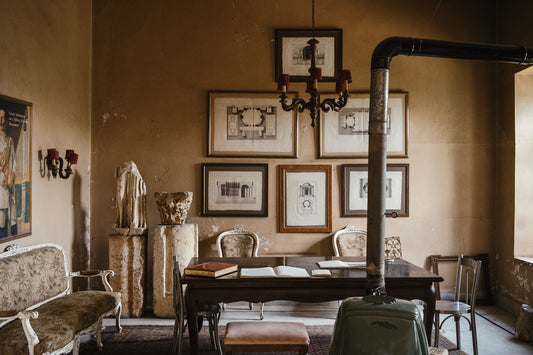There are few experiences that rival exploring Turkey’s southwestern shores aboard a gulet, a traditional, Turkish wooden sailing vessel. The landscape – with cliffs that tumble headlong into the sea, sloping hills of pine forests, scattered ancient ruins, and serene coves – is as poetic as the mythology suggests. This is where Anthony first met Cleopatra, where Herodotus, the “father” of history was born, where Alexander the Great’s forces defeated the Persians. Archaeological vestiges from the vanished civilizations that left their imprint on this land are often just a stone’s throw from your gulet’s mooring – from Greek and Roman temples and theaters to Lycian rock tombs to Byzantine basilicas.
Beginning in Bodrum, the ancient Halicarnarssus, and ending in Gocek, here are some not to be missed sites and favorite spots along the way.
Knidos
A view looking out from the lower amphitheater of Knidos.
After boarding the gulet in Bodrum's port and meeting your crew, the first stop is the archaeological site of Knidos, about a two-and-a-half hour trip. Pulling into the sheltered harbor of Knidos, the sprawling ancient ruins perched atop a steep hillside become visible. The site's double harbor is legendary, and evokes the industry and mystique of ancient civilizations.
Located on the Datca Peninsula which serves to divide the Aegean and Mediterranean Seas, the ancient port of Knidos, dating to the 4th century BC, enjoyed widespread prosperity. The Knidians were expert mariners, both defending their city and dominating sea routes across the Eastern Mediterranean. To reach the site, you arrive at the jetty where you walk past the restaurant to reach the ticket office. Following the dirt foot path, you meander past a series of temples and capitals with carved masonry.
A lion tail detail on an ancient sun dial of Knidos.
Capital fragment, Knidos.
For the more intrepid, there is a trail to the summit which is about an hour's hike. The site is large and you may find yourself lost amongst the brush. Continue exploring!
Turkey Beyond the Meander, by archeologist George E. Bean.
Brushing up on Turkish idioms.
Selimiye: Charming Fruit Markets and Local Crafts
A stop in Selmiye, a sleepy fisherman’s town in the Gulf of Hisarönü, is where you can off-board and restock on fresh produce for the remainder of the voyage. Even in high summer, the shop-filled streets have a peaceful lull. You’ll find fresh herbs and jam, fruit markets, and a cup of strong coffee.
Dried Peppers in Selimiye.
Knitted socks, embroidered handkerchiefs, honeys and jams.
Fresh watermelons to bring back aboard.
Cards and good company are a must on a blue voyage trip.
Boat life — living on deck with just the elements around you — comes as close to inhabiting Albert Camus’ Mediterranean spirit.
Mornings often begin with the captain's nautical map and discussing the route of the day.
Planning our route with Captain Ali.
One of the best parts about traveling with a gulet crew is the cook who prepares Aegean cuisine three, sometimes up to four times a day. The day begins with Turkish breakfast; a ample array of small plates with cucumbers, tomatoes, cheeses, jams, and often freshly baked borek. The cook will often have a meal plan in mind, but it’s fun to discuss the menu options with him daily.
Mücver and cacik (Turkish zucchini fritters and yogurt dish), a crowd favorite.
Melon and white cheese, often served before meals.
Exquisite stuffed eggplant.
Kuzbuku Cove: 'Neighbors' Restaurant
Going off the boat for dinner can be a welcome interlude. Those "in the know" stop overnight in Kuzbuku cove to dine at Neighbors, a seasonal seaside restaurant only accessible by boat. With five tables down on the water, nestled under umbrella pines and olive trees, the restaurant has some of the freshest mezes on the coast. Herbs are cultivated by the family-run restaurant in their vegetable garden. LEVANT recommends getting the grilled octopus, their famous biyik shrimp and the kuru cacik.
Neighbors Restaurant, a LEVANT favorite.
Divine Turquoise at Oglan Boguldu Cove
Continuing down the coast, ask your captain to anchor in Oglan Boguldu cove for the day. This cove has some of the clearest turquoise blue waters in the area where there is a small island to swim around and explore.
Korsan Cove and Serce Cove
Korsan Koyu, meaning Pirates Cove, is a uniquely secluded spot to anchor, with a sandy beach that is surrounded by forest. It was the harbor of ancient Manippa, a Greek colony of the Lycians, which dates back to the Hellenistic period. Only one boat can moor in the cove at a time; your captain may tell you it’s impossible, but you may get lucky!
Continuing south, spend the night in Serce, a large protected bay known for having one of the oldest shipwrecks. While in Serce, look out for a small boat selling Turkish towels and cotton beach throws. Hasan can show you wares from his boat. He usually boards the gulet to finish the deal.
Hasan, who sells woven textiles, Turkish towels and simple summer dresses in Serce Cove.
Exploring textiles from aboard the boat
Kaunos and the Rock Tombs
The next substantial archaeological site going south down the coast is Kaunos, once a harbor city on the Mediterranean that changed hands many times, most notably between the Persians, the Romans and the Lycians. The silted terrain now leaves the site three km from the coast. Your approach is on a river boat (arranged by your crew to transport you from the gulet to the site) which takes you through a meandering sea of reeds. On your way, you will also pass a sandy beach known for its nesting place of loggerhead turtles. Kaunos is a physically impressive site, full of lush vegetation and several well-preserved structures, including a Hellenistic theater, a Roman bath, and several temples. The theater is a particular highlight. With a capacity of over 5,000, it is near-complete and atmospheric, overgrown with olive trees that overlook the wetlands. Recent archaeological excavations of the city's north harbour structures are interesting to explore.
The amphitheater at Kaunos.
On the way back from the site to your gulet, ask your river boat captain to point out the rock tombs of the ancient Lycians, a civilization dating to the 5th and 4th century B.C. whose remnants can be found across Turkey’s Mediterranean coast.
Lycian rock tombs carved into the cliff side.
Aga Limani
One of the last stops before ending the trip in Göcek are the bays at Aga Limani. For hiking enthusiasts, there is a short up-hill trail that concludes with ruins of ancient Lydia, a once-thriving border city of the Carian and Lycian regions. Visible are tombs from the 2nd century, a small theater, agora, and water cisterns still used by local farmers.
*The editor notes missing Turkish accent marks.
Ruins at the top of the hill at Aga Limani.
Turquoise waters in Aga Limani Cove.






























